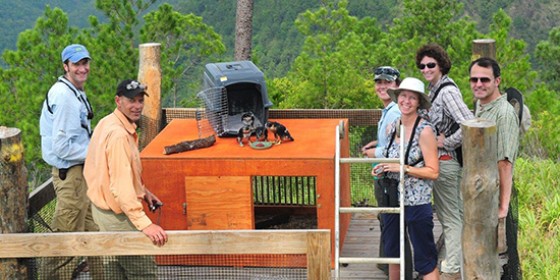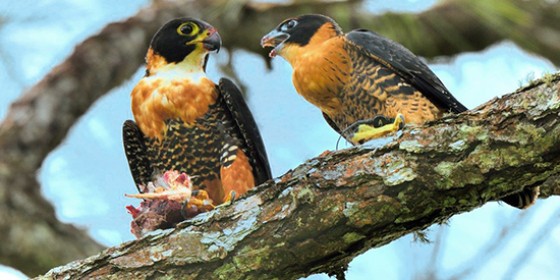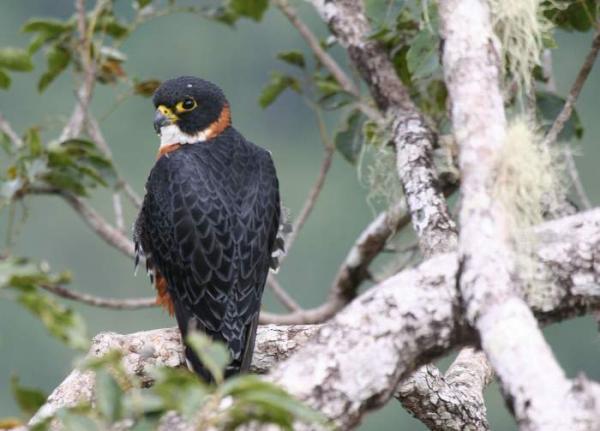Always rare and widespread because of its specialized habitat requirements, the Orange-breasted Falcon now occupies only four percent of its historical range in Central America, limited to the Maya Mountains of Belize and along the Mirador Cordillera in Guatemala.
Our surveys disclose that despite large areas of apparently suitable habitat, this falcon’s numbers are in steep decline with fewer than 20 territorial pairs remaining now isolated by 1500 km from a few pairs in the Darien of Panama and the little-known population in South America.
Threats to Orange-breasted Falcons

Robert Berry

Robert Berry
Orange-breasted Falcons appear to have unique survival advantages: they nest on towering cliffs in rugged and remote mountain habitat that they occupy year round. They care for their young three times as long as other falcon species. They have potentially long reproductive lives of 10 or more years, similar to other falcon species, but a much lower reproductive rate, and our recent banding studies indicate that the life expectancy of an adult Orange-breasted Falcon is just 2.57 years.
We believe the cumulative effects of habitat alteration, fragmentation, human conflicts, and natural predation together help explain the large diminution in the species’ range and continuing local decline. We can confirm that this once mountain species now leaves the sanctuary of its mountain home to hunt invasive feral pigeons and collared doves in the surrounding lowlands and cities, where all raptors are persecuted as vermin.
To help bolster this small declining northern population, each spring we conduct an arduous three-month long hack of captive-bred juveniles bred at our Wyoming facility—no small feat, since this species has proven to be the most difficult of falcon species to breed in captivity. Despite unforeseen high mortality, our captive-bred birds and their progeny are now breeding with wild mates, designed to increase genetic diversity, fitness, and future productivity.
DNA analysis of blood samples from the Orange-breasted Falcon’s entire range is underway at the University of Wyoming, and we’re partnering with Cornell’s eBird to create models, map habitat, and help identify relatedness, population status, and guide future research.
We search for new pairs while monitoring known territories both on foot and by helicopter, including in the Darien region of Panama, a biodiversity “hotspot” where we also conserve Harpy Eagles. We assist Darien’s local communities in creating economic alternatives to forest destruction, benefiting raptors and numerous other species including the Orange-breasted Falcon.







